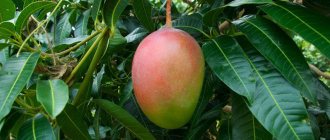Gardening » Citrus » Lemon
0
1317
Article rating
Kira Stoletova
Lemon is a citrus plant that is grown to produce pilaf. They are used in cooking and medicine due to the presence of many useful substances. Lemon trees are also grown at home for decorative purposes. The plant is unpretentious and bears fruit regularly.
Growing a lemon tree at home
Description of indoor lemon
The lemon tree is a hybrid indoor plant. At home, low-growing evergreen trees are grown. Their branches are covered with a small number of thorns. Young shoots have a bright purple hue. Citrus fruit has a long life expectancy.
The leaves are described as light green, oval-shaped with a pointed edge. They are dense, with a large number of glands, and also contain essential oils inside. There are serrations on the edges of the leaves. Foliage lives 1.5-3 years. Lemon flowers are large and have a bright, pleasant aroma. They bloom for several weeks.
The fruits ripen 8-10 months from the beginning of the ovary. Lemons have different shapes, depending on the variety, but always resemble an oval with pointed edges. The fruits are covered with a dense peel of a yellowish-orange hue. The surface is pitted and tuberous, the zest has a bright aroma.
The flesh of the fruit is bright yellow. Juicy with a sweet and sour taste. The pulp is divided into parts. Inside there are also white, egg-shaped seeds covered with a thin layer of shell.
Varieties
The following varieties of indoor lemon are grown at home:
- Pavlovsky. Selective variety. The lemon tree is tall, reaching 2 m in height. The crown is dense, but small. Its diameter does not exceed 1 m. The tree produces 25-45 fruits per year with a bright sour taste and a small number of seeds inside. The skin is rough, its thickness is 3-5 mm. Medium sized fruits. The length of one lemon reaches 10-12 cm, and the weight does not exceed 160 g.
- Lunario. A variety with high yield. It is also used for decorative purposes. The home lemon tree grows up to 1.5 m in height. There are thorns on the branches. The fruits have the shape of an oblong oval. The pulp is not juicy, but has a bright taste. Lemon is able to bloom and bear fruit at the same time.
- Ponderosa. The lemon tree is unpretentious to growing conditions and is resistant to drought. The height of the plant reaches 1.7 m. The tree has a dense, lush crown. The fruits have juicy, sweetish pulp. The variety quickly begins to bear fruit.
- Meyer. A small dwarf plant, the height of which reaches 1.2 m. The lemon tree has a spherical crown with a small number of thorns. Fruit weight - 150-200 g. The peel is thin and has an orange tint. The color of lemon tree flowers is red. There are marks on the branches.
Which variety to choose
Of course, only wild plants can be grown from seeds. As for cuttings, in this case there is a choice. Many amateur gardeners are interested in which is better to grow, tall or short, lemon tree at home. Caring for compact and large plants is approximately the same. However, a tall lemon should still be chosen only if the grower has enough free time. Such a plant will have to be watered, trimmed and fed a little more often than a small one.
Tall varieties include, for example, lemon varieties such as:
- Novogruzinsky.
- Kursk.
Among the short ones, the most popular are:
- Meyer (Chinese).
- Lemon Genoa.
- Volcano.
Landing
Planting a lemon tree at home in a pot is done from seeds. Planting material is taken from purchased fruits. To plant seeds, choose large lemons. For successful cultivation, special soil is selected.
To plant a lemon tree use:
- purchased soil for citrus fruits;
- flower mixture;
- soil with peat;
- leaf soil;
- soil with sand and organic fertilizers.
Lemons prefer light, slightly acidic soil with good water permeability. Cultivation begins in a small pot or cup. Indoor lemon also requires drainage.
Lemon needs good lighting
Landing sequence
- Place drainage at the bottom of the pot. Its volume should not exceed 20% of the total size of the pot.
- Place a layer of substrate on top. It is loosened until fluffy. The soil layer should not be higher than the neck of the pot.
- Plant the seeds. They are placed at a depth of 1.5-2 cm. The seeds are planted immediately after extraction from the fruit.
- Place the pot in a bright room. The suitable temperature for seeds is 19°C-21°C.
It is better to plant 10-15 seeds at a time. This will allow you to select the strongest shoots for replanting. Pot shards, nutshells or small pebbles are suitable for drainage. Also, before planting, seeds are treated with biostimulants.
Seedling care
For indoor lemons, maintaining a constant temperature is important. For better germination, the lemon tree sprout is covered with cling film or half a plastic bottle. The first shoots appear after 2-4 weeks. The seedlings are kept under cover until 3 leaves appear. From one seed 1-2 shoots grow.
The plant is moved to its usual place. The soil in the containers is regularly loosened to provide access to moisture and oxygen.
Preparing the soil for growing at home
A properly selected soil mixture plays a key role in the trouble-free cultivation of lemons. The main requirement for soil is looseness and nutritional value. To sow seeds, you need loose soil with a high phosphorus content. The soil should be neutral or slightly acidic (with a pH of 5.5-6.5), the pH value can be checked using litmus paper or a pH meter.
What fertilizers should I add?
The main component of the soil for lemons should be high-quality manure humus, preferably horse humus, or compost, to which you need to add equal parts of turf soil collected from meadows and leaf humus (from under linden, birch or maple; oaks and poplars are not suitable). The ratio of all components must be 1:1:1. If the mixture turns out to be too dense, you can, based on the size of the volume, add an additional 0.5 parts of coarse washed sand, and if it is too loose, then 0.2 parts of clay. If preparing the mixture is difficult, then you can use simple garden soil or ready-made soil, the main condition being that it does not contain peat. You should also pay attention to the pH indicated on the packaging. Before use, sift the soil through a sieve with 2-4 mm mesh and mix thoroughly.
Transfer
The strongest sprouts are transplanted into pots with a diameter of up to 10 cm. To transplant a lemon tree, containers are taken from baked clay, plastic or non-rotting types of wood. The pot should have a hole for drainage.
Criteria for selecting seedlings to transplant:
- minimum distance between the kidneys;
- low number of needles;
- high-quality leaves that do not fall off when touched;
- strong shoots of maximum thickness.
When transplanting, the pots are also covered with a layer of drainage and substrate. The plants are covered with a glass jar on top to maintain constant temperature and humidity. It is removed once a day for 20-40 minutes so that the plant is saturated with oxygen.
In such conditions, the lemon tree develops until it reaches a height of 18 cm. When the first strong leaves appear, the plant is transplanted into a new larger pot. Each new container should be 4-6 cm larger in diameter than the previous one. This prevents moisture from stagnating in the soil. When replanting, it is important not to bury the root collar into the soil: this causes rotting.
Beneficial features
Lemon tree - how lemon grows and blooms
Lemon is considered a source of valuable minerals and vitamins. Used in cooking. English lemon jam has a sour taste and a delicate consistency.
Medicine cannot do without it. Essential lemon oil has an antibacterial and wound-healing effect. It is indispensable in the following cases:
- stopping bleeding;
- elimination of headaches;
- positive impact on the psyche;
- resolution of dermatological problems;
- removal of toxins;
- cleansing the kidneys and liver;
- prevention of neoplasms;
- strengthening blood vessels and heart;
- excess weight loss;
- normalization of metabolism.
Lemon is very useful
Traditional medicine notes the benefits of lemon for diarrhea and vomiting. In the treatment of snake bites, one could not do without lemon.
Plant care rules
Lemon tree care includes lighting control. A suitable place for lemon is a windowsill with a window facing east or south. The lemon tree will receive 2-3 hours of sunlight per day.
Indoor lemon does not like frequent changes in its growing location. The plant becomes stressed, which causes slow development and loss of foliage and fruits. The lemon tree, like the orange tree, also does not like turning, but it is better to turn the plant towards the sun by 2-3 cm once every 2 weeks.
In winter, lemon feels a lack of light. To care for it, buy special ultraviolet lamps.
Temperature
Place the plant away from the battery
Comfortable temperature for an adult indoor lemon is 17°C-18°C. During the period of bud formation, the lemon tree prefers a lower temperature, but not less than 14°C. During fruit development, the plant requires 20°C-22°C.
In warm seasons, the lemon tree is taken outside into the garden or placed on the balcony. At night, the bushes are wrapped to avoid the influence of temperature changes. In winter, lemons feel normal at 12°C-14°C. To grow a plant without diseases, it should be located away from heating devices to prevent drying out. Frostbite should also be avoided.
Watering and spraying
To grow a lemon tree, you need to add moisture. The plant requires daily watering from mid-spring to early autumn. During other periods of the year, moisture is added 2-3 times a week. Do not water the soil if it is still wet. This will cause waterlogging, which will lead to the development of fungal diseases. It is better to water the lemon tree with filtered water at room temperature, which has been left for 24 hours.
You also need to care for the bush by introducing moisture into the air with a sprayer. Lemons are sprayed daily with warm filtered water. In winter, the amount of moisture increases if there are many heating appliances in the house. In cool air, lemons are sprayed 3-4 times a week.
Fertilizers
Indoor lemons are fed with organic and mineral substances. To maximize development, combine both types of feeding.
For fertilizer use:
- nitrogen;
- phosphorus;
- potassium;
- iron;
- calcium
- humus;
- compost;
- peat;
- ash.
Young trees are fed once every 2 months. Adults fertilize once every 2 weeks in spring and summer. In winter, feeding is reduced to a minimum. At low temperatures, the plant does not absorb substances well, and all fertilizers remain in the soil.
It is forbidden to feed the plant in dry soil. This leads to a burn of the root system, which kills the indoor lemon. Before applying fertilizing, the soil is moistened 1.5-2 hours. If the bush has stopped bearing fruit, phosphorus is not added.
Trimming
When caring for indoor lemons, an important part is the formation of the crown. Its shape depends on the purpose of cultivation.
Types of crown formation:
- Growing lemon for decorative purposes. The crown is small, dense and neat. Leave the branches with the most flowers.
- Cultivation for fruit production. Only fruiting branches with a large number of shoots are left.
To form a crown of lemons, the pinching method is used. The shoot should be pinched when it reaches a length of 22-26 cm. The next pinching is carried out 16 cm from the previous one. There should be at least 5 developed buds on the segment, which form new shoots.
Pruning shoots will improve fruiting
In the future they will grow in different directions. They are pinched after 25 cm. After ripening, they are cut 3-6 cm below the pinching site. Each shoot is 5 cm shorter than the previous one. The last stage is pruning the 4th order shoots to make them bear fruit better.
Pruning is also preventative. It is necessary to break off and trim weak and dried branches, shoots growing inside the crown, as well as segments affected by the virus. This will revive old branches and restore productivity.
Crown formation
One of the main conditions for obtaining a fruit-bearing lemon from a seedling is the correct formation of the crown. The question is that fruit buds on seedlings are formed on branches of the fourth and higher orders. The seedling should not be allowed to develop into a stick. Already from the first months after the seedlings emerge, it is necessary to induce branching by pinching the tip of the shoot with tweezers and achieving lateral branching. You need to leave 2-3 leaves on the side branches and pinch the top. From time to time, the lemon tree needs to be turned, but not sharply, no more than 10 degrees, so that the crown develops evenly. You also need to remove fatty shoots in a timely manner - these are separate fast-growing vertical branches. Branches that grow inside the crown must also be removed.
Reproduction
Indoor lemons are propagated by cuttings and grafting. For cuttings, choose shoots 4-5 mm thick and at least 12 cm long. The lower cut is made under the bud, and the upper one above it. Each cutting should have 2-4 leaves and 3-5 buds.
The segments are treated with biostimulants for root growth and lowered with the lower cut into warm water. After 2-3 days, they are planted in glasses to a depth of 3 cm. For cultivation, a flower mixture with organic fertilizers and river sand is used.
Cuttings do not have a root system, so spraying is used to moisten the plants. They are processed 2-3 times daily. For spraying, use settled water at a warm temperature. The suitable temperature for cuttings is 22°C-24°C.
Roots appear in 4-6 weeks. After their appearance, the plants are transplanted into separate pots.
A rootstock is taken for grafting. It is a young seedling, the thickness of its branches is at least 1 cm. It is also used on orange bushes. An ungrafted lemon develops worse.
Where is the best place to put a lemon tree?
In terms of lighting, this plant is considered quite whimsical. The lemon tree feels best in a south-east window. Of course, it is not always possible to arrange a plant in this way. In principle, lemon can be placed on both the northern and southern windowsill. However, in the first case, in the cold season (and preferably in spring and summer), the plant will have to be illuminated using an artificial lamp.
On the south window, the leaves and branches of the plant should be slightly shaded, including in winter. Otherwise, burns may appear on them.
Pests and diseases
If lemons do not bear fruit, this is a sign of infection. Symptoms include yellowing of foliage and wilting. Although the lemon tree is a plant that has good pest resistance, it is susceptible to fungal diseases.
Causes of yellow leaves:
- dry air;
- lack of nutrition;
- staying near heating appliances in winter;
- pest infestation.
The disease leads to drying out and loss of foliage. To prevent illness, lemons are regularly sprayed and watered. Fertilizers are also applied at the required time. If a tree is crying, there is an excess of moisture in the soil.
Types of indoor lemon pests:
- spider mite;
- aphid;
- whitefly;
- scale insect;
- white mosquitoes;
- mealybug.
To combat them use:
- "Aktellik";
- "Akarin";
- "Fitoverm";
- "Kleschevit."
If pests appear, lemons are treated with onion peels or garlic infusion is used. Take 200 g of product per 1 liter of water and infuse for a week. Wiping the leaves helps against aphids.
The indoor plant is exposed to fungal diseases of the branches and roots. The reason for their appearance is excess moisture in the soil. For treatment, the affected segments are removed, the wounds are treated with growth stimulants and the tree is transplanted into new soil.
Fertilizer application
As already mentioned, lemon is not fed in winter. This is done only in spring and summer. Moreover, only mature plants are fertilized. Lemons planted from cuttings or from seeds do not need to be fed at first. Trees that have reached three to four years of age? Fertilize twice per season with double superphosphate (50 g per liter of water).











